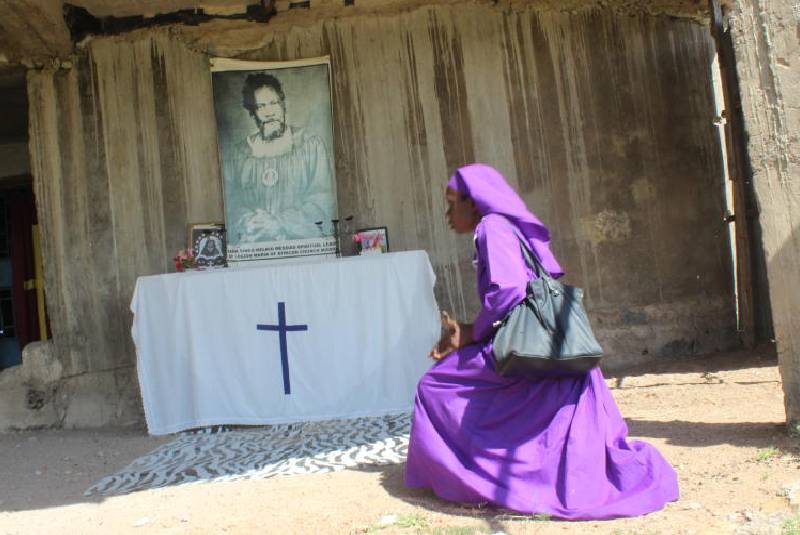×
The Standard e-Paper
Stay Informed, Even Offline

A woman kneels before the photo of Pope Malkio Ondeto, god of the legion maria, at Got Kwer. [Caleb Kingwara, Standard]
The mention of Papa Mesia Simeo Ondeto brings a spark on Lawrence Obonyo’s eyes.